Ukrainian metals for F-16s? What US looking for in Ukraine's subsoil - geologist explains
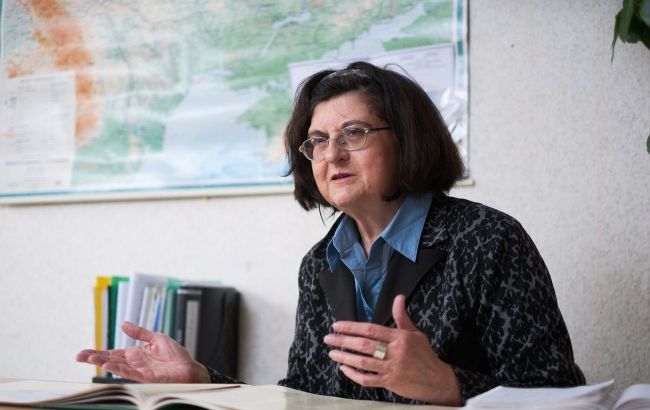 Doctor of Geology, geomorphologist Olena Remezova (photo: RBC-Ukraine/Vitalii Nosach)
Doctor of Geology, geomorphologist Olena Remezova (photo: RBC-Ukraine/Vitalii Nosach)
Rare earth metals in Ukraine were discovered back in Soviet times, but their study was abandoned. Ukraine has a considerable number of unique reserves. What valuable and rare resources Ukraine has and which of them might interest the US – Doctor of Science in Geology, Chief of Mineral Deposits Geology Department of the Institute of Geological Sciences of the National Academy of Sciences of Ukraine Olena Remezova told RBC-Ukraine in an interview.
Takeaways
- What are rare earth metals and why are they so valued globally?
- Which of them are present in Ukraine and where are they located? Which of these resources are valued the most?
- Why was the study of these resources abandoned in Soviet times and which technologies do we currently lack the most?
- Which valuable resources are located in the occupied territories and could the presence of American companies in Ukraine influence de-occupation?
- What valuable resources, besides rare earths, is Ukraine rich in and how can this help develop the economy?
- What will cooperation with the US in the research and extraction of rare earths give Ukraine?
Which rare earth metals are in Ukraine and where they are located
– How rich is Ukraine in rare earth metals and other important minerals? Do we really have something unique that is of global interest now?
– What are rare earth resources? These are 17 metals: heavy, light rare earths, plus scandium. The term “rare earths” is not entirely correct: they were once called rare because they are infrequent and their concentrations are low.
But their main importance and value lie in the fact that they are extremely necessary for modern industry. And not for outdated industries, but for the most advanced, with high added value. It’s high-tech, it’s green metals used in ecology-friendly technologies (which minimize environmental harm – ed.). That’s why there’s such huge interest in them.
– How many of these metals are present in Ukraine?
– Ukraine has significant deposits of rare earth metals important for modern technologies. For example, scandium occurs together with titanium in geological structures in the Zhytomyr and Cherkasy regions, as well as in uranium mining waste. In the Perzhanske deposit, minerals containing yttrium and ytterbium have been found, and in the neighboring Yastrebetske – fluorite and zircon, which contain various rare resources including lanthanum, cerium, neodymium, and others.
Eastern Pryazovia has great prospects for mining such metals. There are two main deposits here: Mazurivske and Azovske. The latter is the only complex deposit of zirconium and rare earth elements in Ukraine. In the Kalmius zone, these metals are with rocks of the syenite and granite types, and in the Southern Kalchyk field – with cerium and lanthanoids.
The Petrovo-Hnutivske deposit is unique even by global standards. Its ore contains a lot of parisite – a rare mineral with cerium, which is almost not found in other countries.
In the Novopoltavske deposit, the carrier of rare earth mineralization is the mineral apatite, which mainly contains lanthanum and cerium, as well as yttrium, samarium, europium, terbium, ytterbium, lutetium. And this list can be continued: there are still a number of underexplored occurrences with good prospects for rare earth metals. Ukraine still has many little-studied areas with the potential for extracting valuable rare earth metals.
– How well studied and explored are these deposits?
– The main map showing the studied rare earth metals in Ukraine is an atlas published in 2001 and later republished in Canada in English. It was compiled by the founder of our department, Professor Leonid Haletskyi, a two-time laureate of the State Prize of the USSR and Ukraine, who discovered the Perzhanske deposit of rare metals. He was from Zhytomyr, like me. These maps related to mineral resources were used in the development of the National Atlas of Ukraine. Now we are continuing to study these resources.
There was a precedent when miners from the Republic of South Africa came to consult with us and told us which deposits interested them. They had this atlas in English with them. They ordered it online on Amazon. It is an important scientific work that helps develop this mineral resource base of Ukraine.
This map shows the entire rare earth group found in Ukraine. These resources are mainly concentrated in the Pryazovia region. Partly – in the north and center of Ukraine. On the map, the Ukrainian crystalline shield is highlighted in pink – it is a multi-layer tectonic plate with a variety of crystalline rocks. This is due to the accumulation and solidification of magma here.
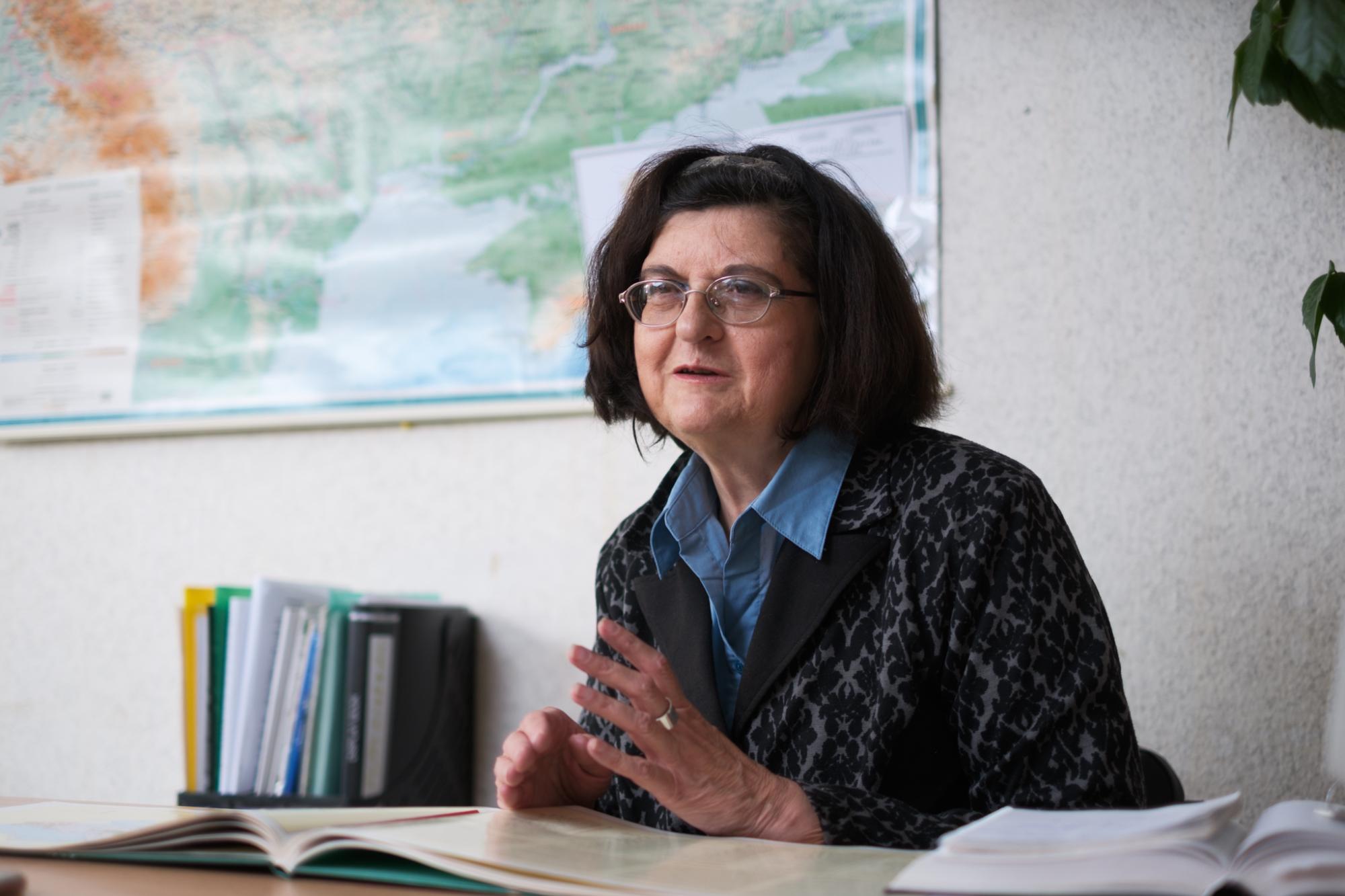
Ukraine has significant deposits of rare earth metals that are important for modern technologies, says Olena Remezova
Linear zones are also highlighted here. Professor Haletskyi studied them and called them mega-zones of tectonic activation. The North Ukrainian zone extends into Belarus, and at the intersection with the Sushchano-Perzhanske zone, an interesting ore hub was formed. This is the Perzhanske deposit. There is beryllium and a whole range of rare metals. There are tantalum and niobium, which require study because there was no interest in them at the time of discovery.
There is also a rare earth group, including zircon and fluorite, which contain trace impurities that may be much more valuable than the minerals themselves.
The Perzhanske ore field in the Zhytomyr region is unique. Up to 150 different minerals have already been identified there, among them rare ones. In this deposit, a very non-traditional carrier of beryllium mineralization is genthelvite. There are only about 20 known occurrences of this mineral globally. And here – a whole deposit. And of course, it will be developed.
Licenses for most of the deposits in this field have been issued to the investment company BGV. The only thing is that development is currently limited because it is practically on the border with Belarus – only 17 kilometers from the deposit. On the other side of the border, there is also a beryllium deposit. There, unlike our businessmen, they rely on Russian technologies. But nothing is progressing there, because Russia has never been considered a technologically advanced country.
The second zone is the Central Ukrainian one. There is also a system of faults here and a rather interesting deposit has formed. There is a whole range of deposits: Azovske, Pokrovsko-Kyreivske, Petrovo-Hnutivske, Mazurivske. They are promising and contain a whole range of rare elements, including rare earths.
– Judging by the map, some of these deposits are in occupied territory.
– Yes, unfortunately, these territories are occupied. Also under occupation is the Shevchenkivske lithium deposit. But a substantial part remains in central Ukraine.
But if American interests are present here, I believe the occupation will quickly disappear. Because the US won’t pass up this opportunity. Various figures are given, according to which China controls about 60%, sometimes up to 80% of the global rare earth metals market. Of course, the Americans don’t like that, and they will look for reserves to support their production.
What cooperation with the US will give Ukraine and which technologies are most lacking
– Would it be realistic for the US, in cooperation with Ukraine on rare metals, to grab a share of the market from China? Or is that unrealistic because our deposits might not be that large?
– I think if not to grab, then at least to slow down this monopoly – yes, that is realistic. We have good reserves, but work needs to be done.
The problem is that Ukraine has not developed rare earth metal extraction technologies for years. Their importance is evidenced by the fact that even back in 1939, the US tried to create strategic reserves of these metals. Laws were adopted to ensure that they were stored and accumulated somewhere. Because even back then, they understood that they would form the basis of advanced technologies and industry. In Ukraine, they were not studied or developed.
– Why weren’t they studied or developed in Ukraine?
– Rare earth metals in Ukraine were discovered during Soviet times. But then all the attention was on Russia, on Siberia. The slogans were “Give us BAM” and the like. The Russians started developing their rare earth metals, while our Perzhanske deposit was sidelined. We studied the data and found that there were fairly good concentrations of tantalum, niobium. But back then it wasn’t perceived or encouraged in any way. There were other goals. It was considered that Ukraine had ferrous metals, coal, and that was enough. Titanium was added in the 1950s.
The second problem – there are no adequate reserve calculations. At the time, reserves were calculated using Soviet methodologies and classifications, which no one in the world understands.
There are now international classifications, and young specialists need to be taught how to work with them, and how to calculate these reserves. Gradually, our leading universities have realized that it is necessary. Computer models also need to be created so that investors can accept them. This is a big and costly task.
And another major problem – in the 1990s, geology as a field was abandoned. There used to be a strong industrial geology sector, scientists studied and discovered everything. But then the funding was cut. Like, “Why bother, we already know everything.” But this violates the main geological law: if you extract something, you must replenish reserves. Every enterprise should operate so that it has not just one deposit, but at least two or three. Then it can have some prospects. But if one is depleted – what then?
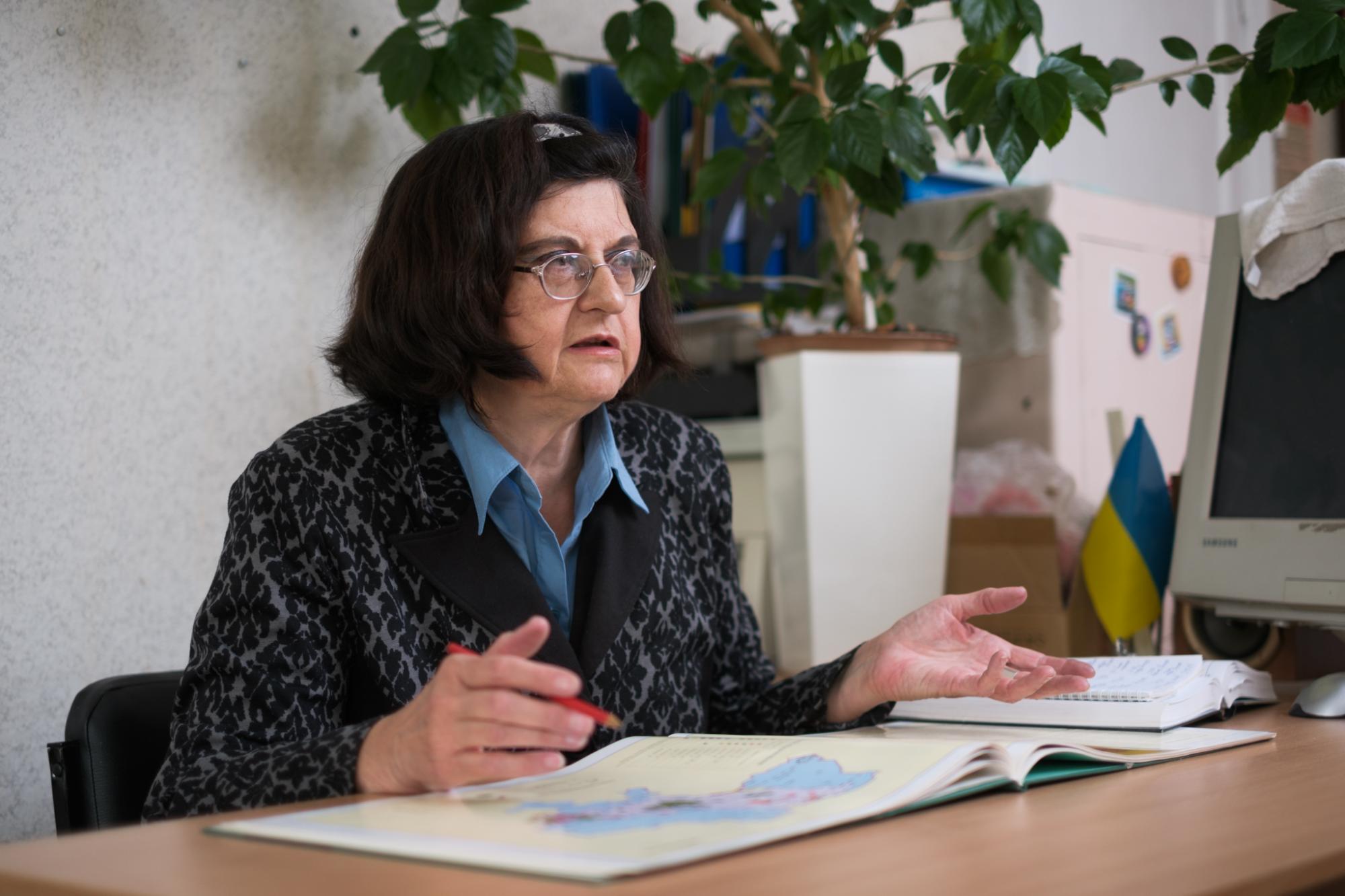
Cooperation with the US will bring technology and jobs to Ukraine, scientist believes
There was no strategy because our geological service mostly dealt with selling licenses and handling paperwork. But the strong geological services around the world have a scientific component aimed at understanding what exactly is present in a particular country. That’s how the American geological service operates. If we need any data, we consult their website. The same goes for the British, Canadian, and Polish services. I believe if there’s interest in this topic, we will eventually get there too.
Kazakhstan once faced similar problems. It’s also rich in rare earth metals and titanium. After the collapse of the USSR, geological personnel left the country, and they began inviting Japanese and Chinese experts. Of course, on very different financial terms.
Another nuance is that since 2005, the data on such reserves in our country has been classified, and is not mentioned in the press or printed publications. If you look through the handbooks of the American or British geological services, the "Ukraine" column is simply blank.
– Why is this data classified in our country?
– Possibly, some Soviet traditions persisted. Perhaps there were other reasons not to disclose these reserves.
– Possibly due to a potential corruption component?
– No, that’s completely unrealistic, because we don’t even have the technologies needed for such extraction. Plus, these ores need to be thoroughly processed to extract exactly what is needed. For example, to extract 20 tons of scandium, you have to process 2 million tons of ore.
These rare earth metals also mostly lie deep underground, sometimes around 200–300 meters. And digging open pits 500 meters deep – this is practically unheard of even globally, so a different approach is needed. Then the enrichment process follows, which also varies depending on the mineral.
– What technologies do we currently lack the most? What could American or other foreign companies provide?
– We basically don’t have such technologies, we need everything that is modern. Modern technologies, mostly Western ones, would come in handy here. Among the countries that possess them are the US and Japan.
If we launch cooperation with the US, they will bring technologies here. We cannot use the Russian experience not only for political reasons. There was nothing advanced there, to begin with. Russia did engage in some developments, but in recent years everything has fallen into disrepair. Some time ago, the head of a relevant institution, who was an enthusiast in this field, died. And that was the end of it. Their technological problem will persist.
Chinese technologies should not be used either. When they started developing a deposit in China, they eventually had to relocate entire villages due to severe pollution. Such practices are clearly unacceptable in the center of Europe. The technologies must be environmentally clean and advanced.
– How do you assess the potential of cooperation with American companies? What could they bring – technologies, investments, experience?
– They can bring all of that. What will cooperation with the US give us? Technologies for production exploration of deposits, calculations according to international classifications. And, of course, jobs: they won’t bring specialists from thousands of miles away, they’ll hire them locally. Currently, there are almost no jobs in this field, but with such cooperation, they will appear.
Also, the first step would be determining how much of these minerals we actually have. And accordingly, we can develop production further, because right now, we simply don’t have it.
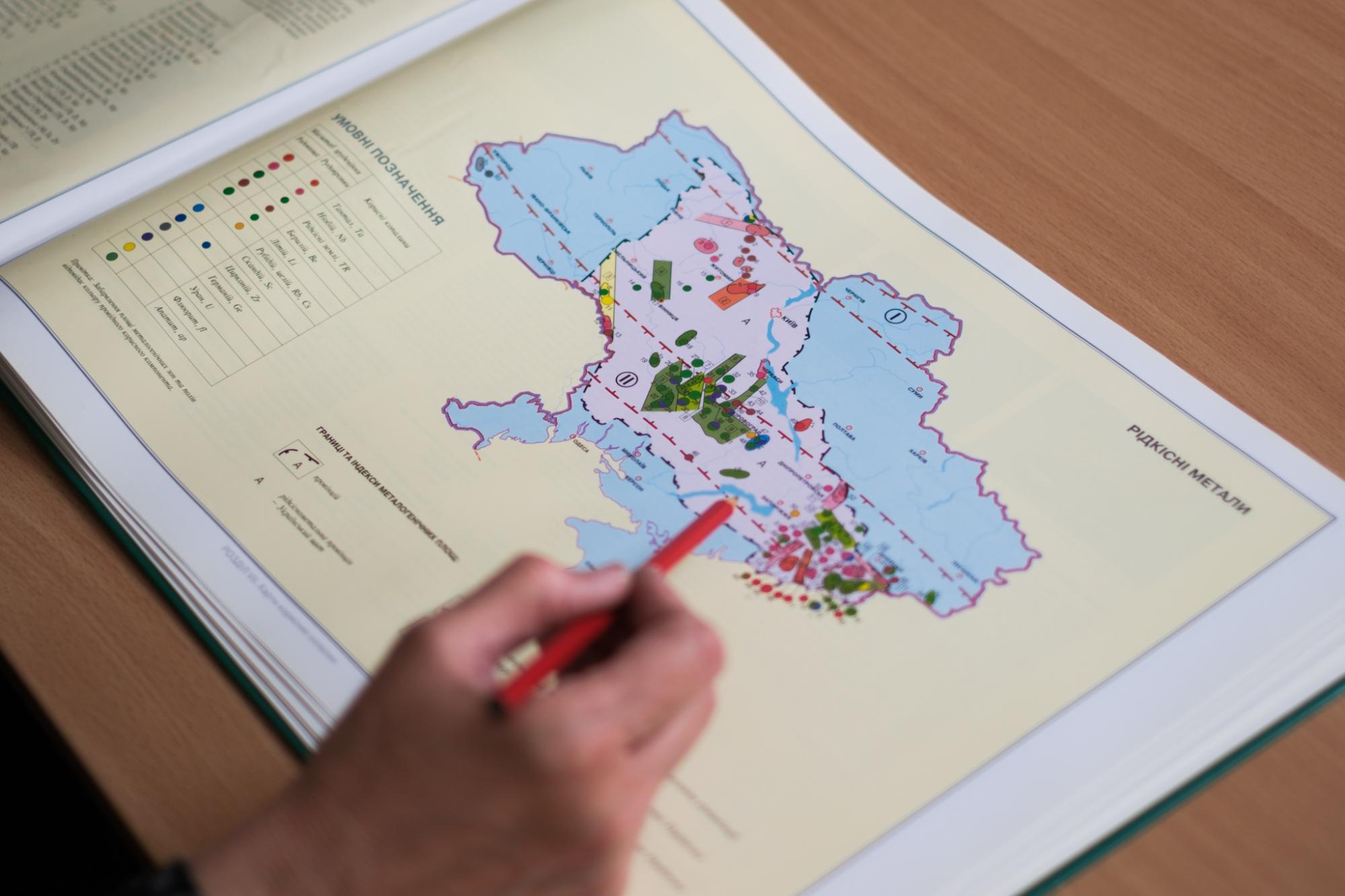 Some of the rare earth metal deposits are located in territories occupied by Russia
Some of the rare earth metal deposits are located in territories occupied by Russia
Which rare earth metals are the most expensive, and what other resources is Ukraine rich in
– Which rare earth metals are considered the most expensive on the global market? Are they present in Ukraine?
– They are all valuable, really. Rare earth elements have over 400 different applications. I’ve looked through various sources, mostly the summaries of the US Geological Survey. The latest reports are from 2024. I’ll describe the most expensive ones. For example, terbium oxide with 99.9% purity costs $810 per kilogram. And this isn’t the highest price – it’s an average, sometimes even a minimum. It’s expensive because it’s used in laser technology.
Dysprosium oxide with 99.5% purity costs about $260 per kilogram. It’s mainly used for high-strength magnets in various industries, including nuclear reactors.
Neodymium oxide with 99.5% purity – $56 per kilogram. It’s mainly used in computer technology, turbine components in energy, and various hybrid vehicles. High-purity scandium in the form of 2-gram dendrites (these are crystal, tree-like structures) is also expensive – $513 per gram, and in alloys – $360 per kilogram. It’s also expensive because it’s used in aviation and for various high-strength alloys. Others cost less – a few dollars per kilogram. They’re simply easier to extract.
Of course, we will be able to profit from this if extraction begins. These are very low concentrations, so the question of implementing technologies is critical. As I said, sometimes it takes processing millions of tons of ore to extract what’s needed.
– What else among Ukrainian resources most interests foreign investors? Perhaps not only rare earth metals?
– We also have good prospects for entering the American market with titanium, though it is not a rare earth metal. The thing is, Ukraine is one of the few European countries capable of extracting titanium. Among European countries, only Norway extracts it so far.
Titanium has many areas of application. Products made from titanium have very high added value. It’s used in the defense industry, aircraft, modern ships, weapons. And in general, all mechanical engineering needs titanium. When our mechanical engineering sector began to decline, titanium extraction also decreased.
Titanium is needed in the prosthetics industry. Implants are also titanium. When I worked at Zhytomyr Polytechnic, there was a large-scale project to develop implants. Our university developed a method to coat titanium with hydroxyapatite. It’s a substance that allows implants to be integrated quickly. The author of the method is Professor Ivan Hrabar. But it was not implemented at the time. Despite all efforts by scientists, the Ministry of Health didn’t listen to our colleagues. Meanwhile, this technology greatly interested the Germans. Even then, they said a lot of implants would be needed. And now in Ukraine, it’s more relevant than ever.
And if we combine titanium and lithium extraction, we can get very powerful batteries for hybrid vehicles. In some places, titanium and lithium deposits overlap – it’s a single belt. There are titanium placers in the Zhytomyr region and a belt along the Dnipro – the Ukrainian Placer Subprovince. Also – in the area of Pryazovia. In smaller amounts, placers are found in the Kharkiv and Sumy regions. Perhaps less attractive, but they could also be used eventually.
Besides, titanium ores contain scandium and vanadium. Scandium, by the way, is found in the alloys used by Americans to manufacture F-16 and F-35 aircraft. Several hundred kilograms are needed per aircraft to produce modern alloys that provide strength.
– Is there a lot of titanium in Ukraine?
– Estimates vary. We believe that if we count reserves plus resources, and the part that is underexplored and unstudied, it could be up to 20% of the world’s titanium reserves. Official reserve estimates indicate 7–10%. Russians always wrote that we have 1%, which is not true. The truth is that the best Russian titanium deposit is worse than our average one.
When it comes to Ukrainian building stone, the potential is truly enormous. These are granites and similar rocks. Non-metallic ones are used in construction. In the Zhytomyr region alone, there are about 300 quarries extracting them. These are polished decorative products, for interior finishes and so on. The lower-quality material is used for gravel.
Our labradorites – with iridescence in a range of colors (a rock that exhibits a characteristic optical effect – iridescence with blue-green, yellow, or purple tints on the surface – ed.). I saw similar ones in Scandinavia when I was in Norway. But you rarely find such deposits elsewhere, which is why they buy from us.
Such high-strength rocks are actually quite rare. In Italy and Germany, for example, there are almost none. We have less marble. There are small dolomitic marble deposits in the Zhytomyr region and small deposits in the Carpathians.
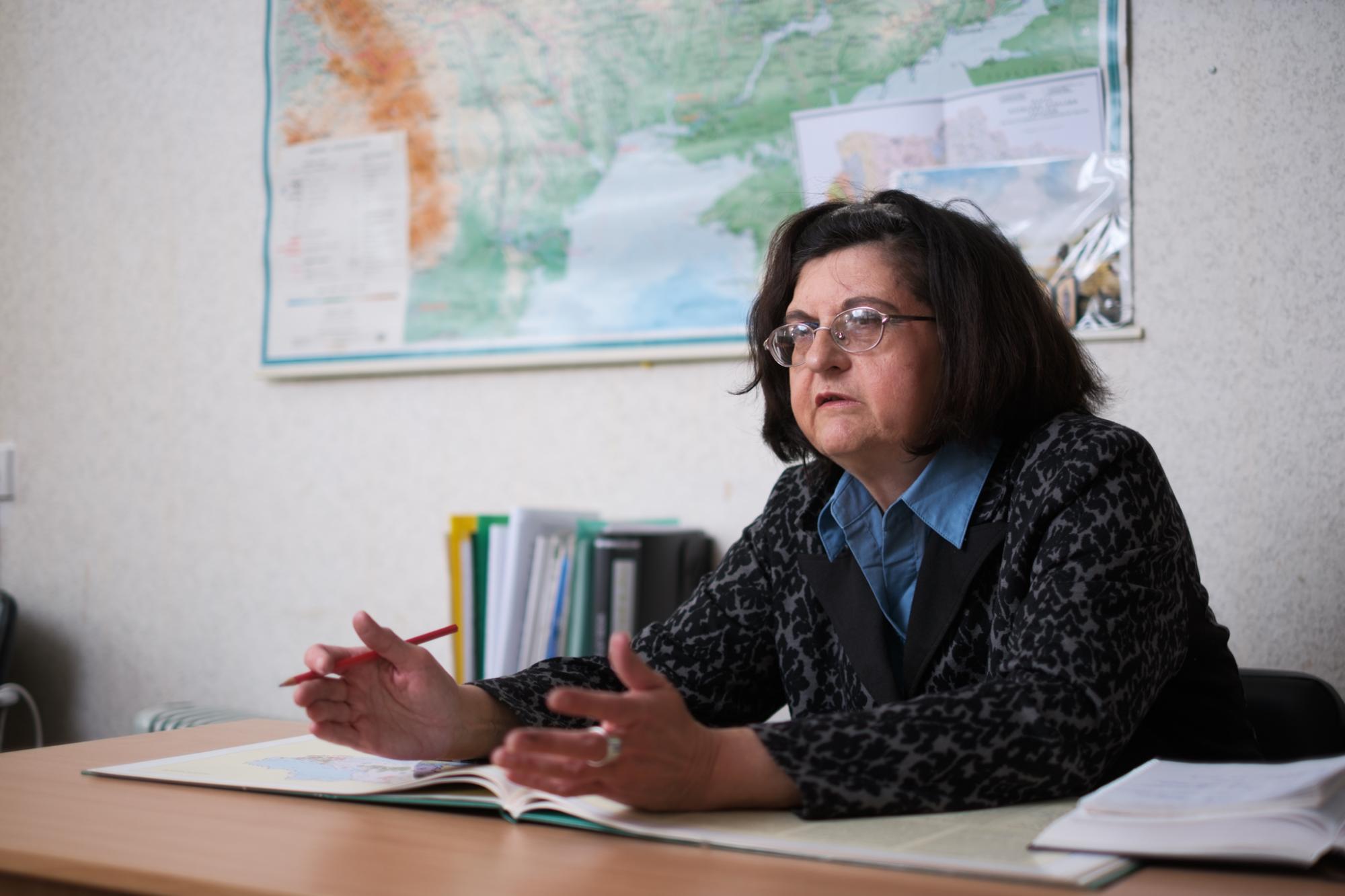
Ukraine also has various decorative and precious stones, gravel and building stones are important resources – Olena Remezova
Crushed stone is also a valuable raw material, and I think it should have been made strategic at some point. If you look at the railways and roads in the European part of Russia – the сrushed stone there is Ukrainian. It was exported, and there were joint ventures. When the war began, there was an odd accident at one of the enterprises in the Zhytomyr region – the quarry was flooded.
A lot of сrushed stone will be needed for Ukraine’s reconstruction. At Zhytomyr Polytechnic, a construction specialization has been opened in addition to the mining one, with future reconstruction in mind.
Ukraine also has various decorative and precious stones. Unfortunately, not all of them have been studied. They used to say: “It’s better to import from Russia.” Our own deposits were not developed, except for the Volyn deposit, which has topazes, beryls, and smoky quartz. But we also have flint, onyx marbles. And, of course, we all know about the amber saga. It’s good that the licensing procedures have been simplified.
Some companies operate legally and thus bring recognition to Ukraine by selling these products. These include Poland, Qatar, and Dubai. Notice how there are practically no discussions about illegal amber mining anymore. Some companies have legalized it, and some artisans who used to create amber artworks returned from abroad and can now work and earn money here. They say, “There’s a war in the country, it’s shameful not to pay taxes.” Now there is more oversight, and more illegal miners are being driven out. Some of them have also been mobilized into the Armed Forces of Ukraine.
In Poland, the licensing process for amber extraction is also simplified. There’s one large quarry developed by a major company. There are small ones along the Baltic coast, and there, a permit from the mayor of Gdańsk was enough. If you have a license – please, pay your taxes, extract, and earn money.
I think that the agreement with the US will be rather beneficial for us. What can we talk about if we don't have the technology, research, and reserve estimates? Otherwise, they would have remained underground. This is not good. We have good prospects. All these resources should work for our people.
Also, the agreement on minerals can attract other companies to process raw materials and make new products creating certain clusters in the regions. And even more jobs.

